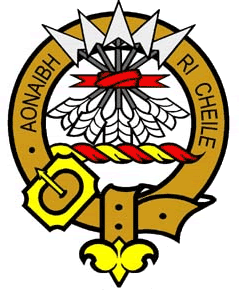“Ray, that sounds like an unusual Sharps rifle to be sure. I tend to favor the heavy-for-caliber weights because of the proposed benefits in penetration (if I ever follow through and go hunting now that I have the license) and also for long range, or ultra long range, shooting as the heavy bullets can perform better-sometimes.
--Tutt
Tutt: really don’t think it will be so unusual. The Sharps
factory .50 rounds were not loaded with heavy bullets for the calibre:
-- A re-print of the1879 Sharps Rifle Company catalogue. It states that the Sharps .50 bullets were 425 and 335 grns greased grooved and 473 grn-paper patch (PP) swaged.
-- Martin Rywell’s Sharps Rifle: The Gun That Shaped American Destiny”, lists the same. Available from Buffalo arms for the princely sum of US $8.50:
http://www.buffaloarms.com/browse.cfm/4,3164.html
Rywell’s book is a treasure-trove of information on the Sharps rifles and also has a reprints of the various catalogues. The catalogues contained the Sharps rifle Company’s directions for loading target and sporting ammunition. For those that would like to reload in this fashion, that information alone is worth the price!
-- Frank Sellers’ “Sharps Firearms”, in the cartridge section, states:
1869 sporting rifle: 50-70-1.75” (AKA 50-70 Gov’t.) -- 475 grn grooved ball and 500 grn PP. Post 1876, no more .50 calibre rifles made except “to order”. Standard Sharps loads for the 50-70 were the 425 grooved and 473 PP bullets.
1872: .50 cal. 2” straight case introduced. Last shipped in April 1876. Very few bullets offered in .50 cal -- 335 grn express, 425 and 457 grn grooved and 457 and 500 PP. Sellers claims that as far as it is known only the 457 grn grooved and the 500 grn PP were factory loaded in the 2” case.
July 1872: .50 cal 2.5” case introduced -- AKA the “Big Fifty”. Standard loads: 50-100-425 and 473 grns and both PP. Sellers claims it was not a particular popular cartridge and that the “Big Fifty” went out of favor when the new longer range .45 proved itself.
As an aside, the late Frank Sellers was the considered one of the “Deans” of the Sharps rifle company, the company’s ammunition, reloading tools, etc. Many consider his book as the Bible on the Sharps. While not exactly inexpensive, it is well worth the price and available from Buffalo arms:
http://www.buffaloarms.com/browse.cfm/4,3095.html
Hosmer’s “The .58 and .59 Caliber Rifles & carbines of the Springfield Armory 1865-1872”, has interesting information on the military rounds and rifles, which had a slow 1:40 (approx.) twist.
https://www.northcapepubs.com/#springfield
From what I’ve read and seen, seems that the heavy bullet and faster twist syndrome for the .50 cal. are a rather recent innovation. And they can be real eye openers to shoot. I once shot a .50-3.25“ -650 Long Range Sharps Express. With the faster twist , the barrel would only stabilize a 650 grn. bullets

. After shooting it twice, I realized why the owner wanted to sell it.


I was a slow learner -- took me two rounds to figure it out!


My re-barreled (Badger 1:18 twist) 13lbs. 45- 2 7/8” Borchardt is a “hoot to shoot”, but after about 45 rounds with its 550 grn Creedmoor bullet, it is “tiring“.
Lastly, don’t under estimate a .45-70 with a case full of black powder and the “lowly” soft alloy 500 grn Gov’t style bullet. Hunters on the Shiloh board are reporting very deep penetration and sometimes complete pass through on deer and buffalo with this combination. Of course, for a flatter trajectory, the .45-27/8 (AKA .45-110) is the cat’s meow for hunting and the bee’s knees for LR target work. However, the .45-2.4” (erroneously AKA the .45-90)is not too far behind....
The most important aspect of this signature line is that you don't realize it doesn't say anything significant until you are just about done reading it & then it is too late to stop reading it....
Grand Poo Bah WA F.E.S.
In real life may you be the bad butt that you claim to be on social media.





